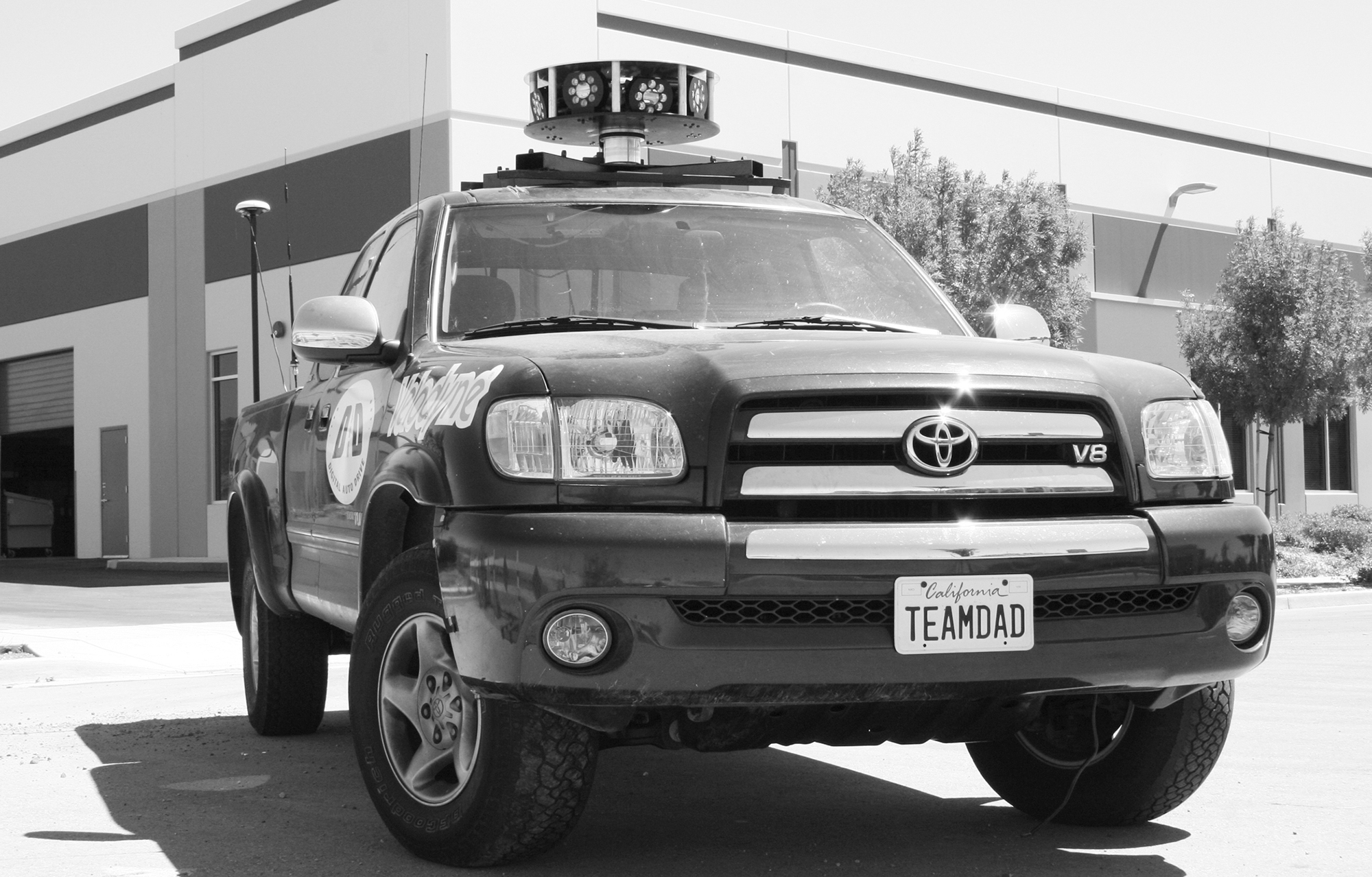
Carnegie Mellon University’s Red Whittaker launched his career in robotics with a rover that went into the damaged nuclear reactor at Three Mile Island in Pennsylvania after a partial meltdown in 1979. Courtesy of Carnegie Mellon University

Carnegie Mellon University’s Red Whittaker launched his career in robotics with a rover that went into the damaged nuclear reactor at Three Mile Island in Pennsylvania after a partial meltdown in 1979. Courtesy of Carnegie Mellon University

The members of Carnegie Mellon University’s Red Team kept brutal hours in the run-up to the 2004 Grand Challenge, often working on their robot, Sandstorm, until they just couldn’t anymore. Courtesy of Carnegie Mellon University

Anthony Levandowski got his self-riding motorcycle, Ghostrider, into the final of the 2004 DARPA Grand Challenge, but it flopped just feet from the starting line. Courtesy of Jeff Rupp

DARPA director Tony Tether had reason to celebrate Stanford’s win at the 2005 Grand Challenge: The successful finish proved a major boost to DARPA’s reputation and validated Tether’s idea for an autonomous vehicle race. Courtesy of the Defense Advanced Research Projects Agency (DARPA)

Stanford’s Sebastian Thrun was always glad to talk to reporters about Stanley, the autonomous vehicle that won the 2005 Grand Challenge. Linda A. Cecero/Stanford News Service

The first iteration of Dave Hall’s Velodyne spinning Lidar sensor weighed about three hundred pounds and collected 64,000 data points about its surroundings every second, in 360 degrees. Lidar soon became a must-have sensor for self-driving cars. Courtesy of Dave Hall

One hundred DARPA officials worked the 2007 Urban Challenge, many of them surveilling the course from the agency’s mission control center. The agency spent more than $21 million putting the race together. Courtesy of the Defense Advanced Research Projects Agency (DARPA)

Anthony Levandowski, casually dressed for his television appearance, sent a self-driving Prius across the Bay Bridge as part of the Discovery Channel show Prototype This! Courtesy of Joe Grand

The early members of Google’s Chauffeur team formed a murderer’s row of computer science talent. Left to right: Chris Urmson, Jiajun Zhu, Dmitri Dolgov, Dirk Haehnel, Anthony Levandowski, and Nathaniel Fairfield. Courtesy of David Goldwater

After Chauffeur’s Prius passed its first official driving test, Chris Urmson attached the special Nevada license plate anointing the car as a legal, road-going robot. Courtesy of David Goldwater

Using Lidar and other sensors, self-driving cars like Uber’s identify the things they spot as cars, pedestrians, cyclists, or other categories. They navigate using pre-made maps, and their engineers gather detailed data on every move they make. Courtesy of Uber

Before Google’s self-driving car team spun out as its own company, Waymo, the Chauffeur team sent a blind man named Steve Mahan for a carefully planned ride around Austin, Texas, in its Firefly vehicle, without an onboard safety operator to intervene if the car made a mistake. Courtesy of Waymo

General Motors had hoped to launch a self-driving service by the end of 2019 in San Francisco, using a version of its all-electric Chevy Bolt without a steering wheel or pedals. In July of that year, it pushed back the deadline indefinitely. Courtesy of General Motors

After Ford invested heavily in Bryan Salesky’s startup, Argo AI, the two companies began self-driving tests on the streets of Pittsburgh, also home to Carnegie Mellon University. Courtesy of Argo AI

Argo remained an independent company outside the Ford hierarchy and far from Detroit—big factors in its ability to recruit software-savvy engineers. Courtesy of Argo AI

After leaving Google in January 2016, Anthony Levandowski created a robo-trucking startup called Otto and sent a big rig down a Nevada highway with nobody behind the wheel. Courtesy of Uber

In August 2019, Anthony Levandowski was indicted for allegedly stealing trade secrets from Google. Outside a San Francisco courthouse, he declared he was innocent. Alex Davies